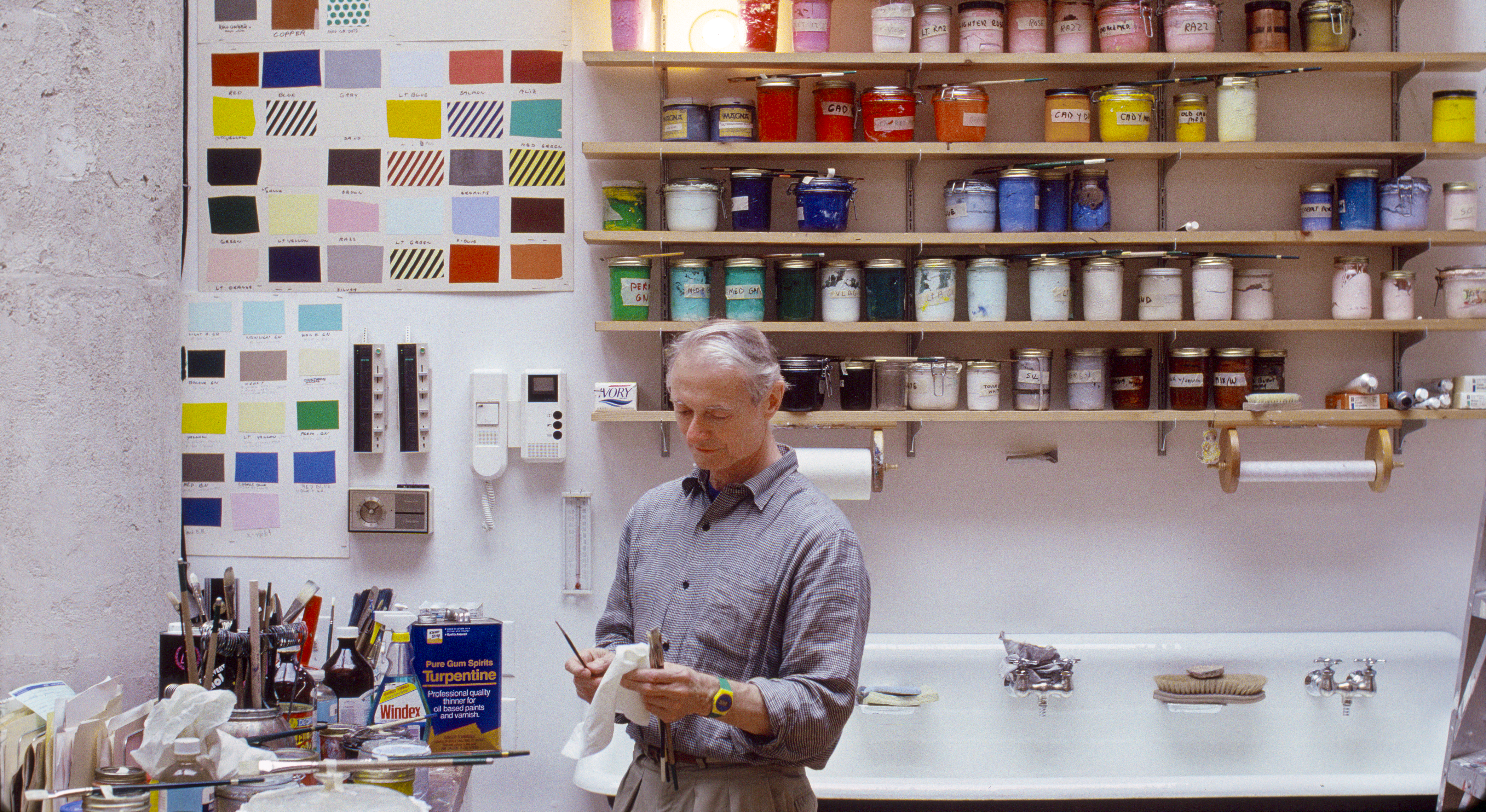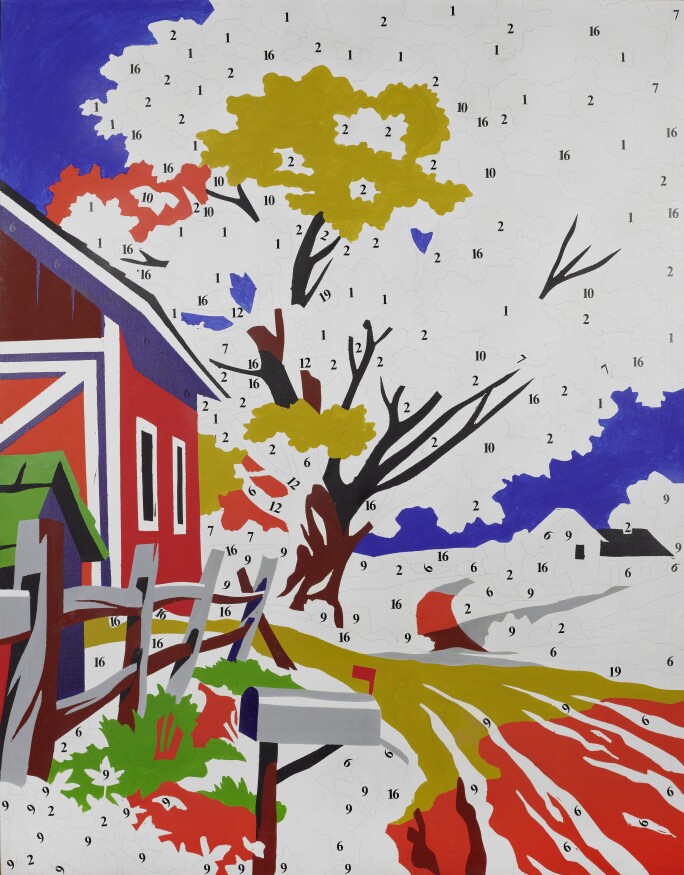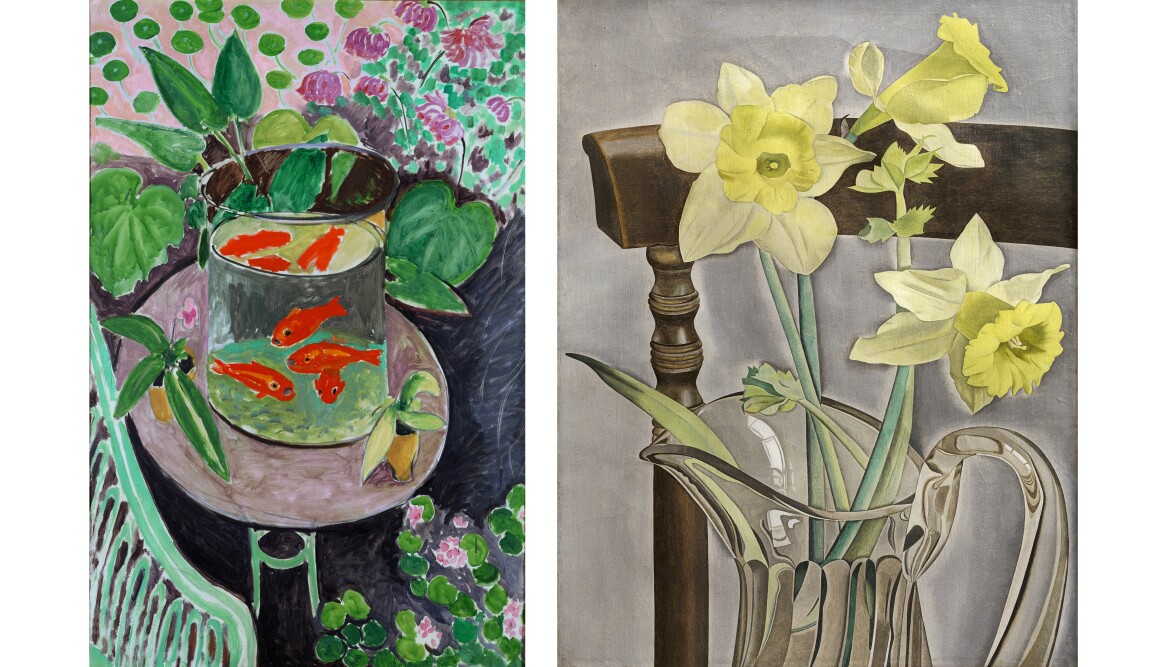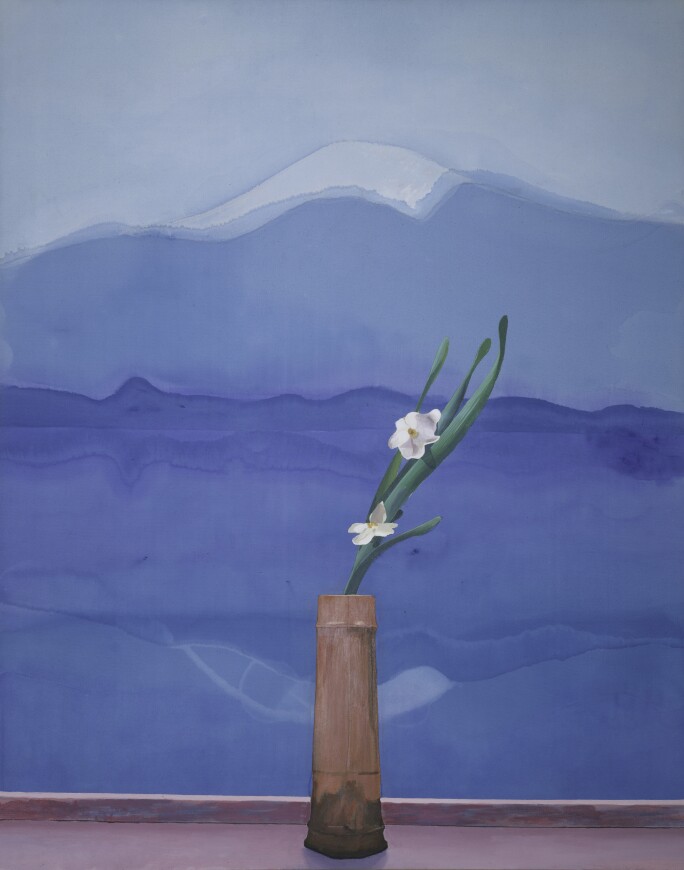D84G7
-
 Sotheby's StoriesHow Jane Birkin's Original Hermès Birkin Bag Made History... Again | A Sotheby's Auction Story
Sotheby's StoriesHow Jane Birkin's Original Hermès Birkin Bag Made History... Again | A Sotheby's Auction Story -
 Handbags & FashionJane Birkin's Original Hermès Birkin Bag Shatters Auction Records at $10.1 Million | Sotheby's
Handbags & FashionJane Birkin's Original Hermès Birkin Bag Shatters Auction Records at $10.1 Million | Sotheby's -
 Geek WeekA 54-Pound Martian Meteorite Just Landed at Sotheby's — But How Did It Get Here?
Geek WeekA 54-Pound Martian Meteorite Just Landed at Sotheby's — But How Did It Get Here?

“Lichtenstein remains an artist of absorbing contradictions. His inventiveness is rooted in imitation; he transformed the very idea of borrowing into a profoundly generative, conceptual position."
Still Life Tapestry (Study) is a meticulously crafted example of Roy Lichtenstein’s pioneering Pop style, teeming with references to the art historical canon. The present work embodies Lichtenstein's enduring engagement with one of the most significant art historical icons of the twentieth century, Henri Matisse; taking inspiration from the Modernist master’s Goldfish from 1912, Lichtenstein furthers the art historical tradition of the still life with his iconic compositional arrangement and visual lexicon. In true Pop fashion, Still Life Tapestry (Study) subverts the depth and tonality typically ascribed to a quotidian still life through bold primary colors and Ben-Day dots, blurring the supposed boundaries between ‘commercial’ and ‘fine’ art. An exceptionally profound work from one of the twentieth century's most celebrated artists, Still Life Tapestry (Study) simultaneously pays homage to the history of artistic precedent while also challenging the very foundations upon which it rests.

A bouquet of white flowers in a vase, a red apple with a glossy sheen, blue curtains draped into manifold pleats, and tables rendered in a vibrant yellow take center stage in Still Life Tapestry (Study). Emerging from the right hand corner is a cylindrical fish tank with two red fish, a clear reference to Matisse’s Goldfish. Confidently recontextualizing the tradition of still life painting with his signature visual lexicon, Lichtenstein balances between a harmonious dialogue with the tenets of modernism and a distinctly contemporary sensibility, inserting the artificiality and reproducibility of the modern-day image into the “high culture” of fine art. Thus, the present work destabilizes the very depth, form, and figuration that viewers come to expect from an orthodox still life work. Whether it be Dutch still lifes of resounding symbolic profundity, Cubist still lifes that wrestle with the limits of representation, or contemporary still lifes by contemporaries like David Hockney and Lucian Freud, the present work engages within a sincere conversation that interrogates the capacities and limits of the genre. Undeniably a metonym for the scaffolding principles of art history, the still life takes on a new role in Lichtenstein’s work and becomes a physical embodiment of the reflection on art history that defines the artist’s mature practice.


Famously fascinated with commercialized aesthetics and images, Lichtenstein brings his exacting and alluring composition to Still Life Tapestry (Study) by transforming the flowers, fruit, and fish, vividly swathed in vibrant colors into referential symbols of their real-life counterparts. From the popping glint of the apple’s shine to the boldly outlined flower petals, the effect of the work on the viewer becomes one of arresting significance, mediated through such resoundingly digestible symbols. The present work is designed for tapestries manufactured in an edition of 8; for almost every monumental painting or multiple, Lichtenstein would first create a preparatory collage like the present work. Using a variety of materials such as cut painted paper, printed paper, marker, and pencil, Lichtenstein developed the original composition which he would enlarge into his desired proportions. The artist has previously emphasized how important these collages are to his creative process: “I do a lot of [collaging] in the paintings. I start something and keep adding to it—putting pieces of paper down temporarily and looking at the image. Because to do all those graduated dots and dotted areas and diagonal areas and then take them off and redo the painting is punishing work… it’s just much easier to try it out first in collage to get everything I want.” (the artist quoted in: Exh. Cat., Madrid, Fundación Juan March, Roy Lichtenstein: Beginning to End, 2007, p. 126) Still Life Tapestry (Study) opens a portal for the viewer to parse through not only centuries of the Western art historical canon, but Lichtenstein’s meticulous, exacting, and expressive creative process that underlies his iconic praxis.


Offered for the first time on the public market, Still Life Tapestry (Study) is an exemplary work from Lichtenstein’s formidable oeuvre. Belying the meticulously crafted nature of Lichtenstein’s layered creative process, this study is a rare look into the creative process of an incredible artist. Poignant and powerful, this collage speaks to Lichtenstein’s intuitive understanding of the phenomenal potential of popular imagery and his capacity to, more than any artist of his generation, realign the cipher of that imagery to unveil verities behind popular culture.

